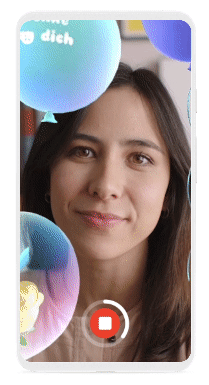Update 7th July 2020: Google has now increased the number of participants allowed in each video call to 32 participants. This increase comes as a result of the growing popularity of Google Duo competitors that allow you to have up to 100 participants in a single video call.
When it comes to creating industry-leading software, very few can hold a candle to Google. The Mountain View firm has tried its luck in many sectors of the industry, and most of them have turned out blowing the competitors out of the water. This time, during the COVID-19 pandemic, it has turned its attention towards video calling, and we are glad for it.
Google currently has three video-calling solutions: Meet (previously known as Hangouts Meet), Hangouts, and Duo. All three are great in their own right, but if we were asked to discard one option, we’d have to go with the regular Hangouts. Hangouts, despite having some perks, doesn’t offer anything that the other two miss out on.
In this piece, we’ll take a look at the two survivors of our elimination test — Meet and Duo — and help you pick out the best solution for you. Now, without further ado, let’s get to it.
Common perks of Google Duo and Meet
Before taking a look at features that set the two video-calling/conferencing platforms apart, let take a look at the common strengths of the two.
Free
Update (May 6, 2020) Meet’s official portal Google PlayOnly a few days ago, this point would have been skewed in favor of Duo because Meet required you to have G Suite access. However, recently Google announced that they would make Google Meet free for everyone, and to be eligible, you only needed a Google ID. We’re sure Google won many hearts with that announcement, and it also levels the playing field with Duo.
► How to get Google Meet for free
Encryption

Encryption ensures your video calls and messages are hidden from prying eyes. Whether it’s the government or petty hackers, no one can get their hands on the information you are exchanging. Google Meet and Duo may work differently, but at their core, they are two of the safest options out there.
While Google Duo uses End-to-End Encryption, Meet uses Transport-Layer Encryption to keep your data secure. Additionally, all Meet recordings are stored in an encrypted format, guaranteeing peace of mind.
720p video calling
Back in the day, video calling used to be a thing of wonder and luxury. The resolution of said video calls barely touched 360p and there used to be a considerable amount of noise on the screen. Now, video-calling has become a part of our lifestyle, and we have the likes of Google and Skype to thank for it.
Duo and Meet are two of the most reliable options out there, capable of keeping a steady 720p stream. The best part: they can maintain their quality even on poor connections.

Why you should pick Google Meet?
Until now, Meet used to be a premium solution, only offered to those with a premium GSuite account. However, considering the extraordinary situation we find ourselves in, Google has decided to make the service available for free to Gmail users. The rollout is set to commence in May and would be gradually available to all users across the globe.
Here are the top reasons why you should give Google Meet a shot:
Perfect for large meetings
Over the last couple of years, Google Duo has emerged as one of the leading video calling platforms for Android users. At launch, Duo could only facilitate 4-member group calls. Over the last few updates, Google has pushed the number to 12, thinking it’d be enough to cater to most of its users’ needs.
For personal use, 12-people video calls should be more than sufficient. However, if you’re part of an organization that requires more than 12 people to be present at a meeting, you would wise to migrate over to Google Meet. The platform supports up to 250 members — free version offers 100 contacts — on a single video call and even allows you to stream to up to 100,000 people.
Screen Sharing
Screen sharing is an invaluable tool for organizations that require close collaboration. By sharing your screen with your peers, you can easily put your thoughts across; be as illustrative as possible. Google Duo, as you might already know, doesn’t allow you to share your screen. Meet, on the other hand, offers robust screen sharing even for free users.
Real-time captions
This Google Meet exclusive feature converts spoken words into on-screen text in real-time — the moment they are spoken. If spoken clearly, the spoken texts are surprisingly accurate, which goes a long way in increasing accessibility. Want your meetings to be more inclusive and easier to comprehend? Switch over to Meet.
Group Video call on PC
Between these two, only Google Meet lets you have a conference call from PC. While Duo allows 12 participants from a phone or tablet, on its web version on PC, the calls are restricted to one to one. That’s as much lame as it’s surprising, but that’s that. Luckily, we do have a workaround that lets you make and receive group video calls on PC, but it’s not a novice user can work with day-in-day-out.
► How to make group calls on Duo on Windows or macOS PC

Why you should use Google Duo?
Google Duo has always been and will always be free. There’s no fine print to look out for and there are plenty of great features to look forward to. Here are our favorite Google Duo features:
Video messages

Unlike Google Meet, Duo is built solely for personal use. So, naturally, Google has done all it could to make the video calling application as intimate as possible.
For those frustrating occasions when video calling isn’t an option, Duo offers the ingenious option of video messages. You could also pick a filter or effect — AR effects included — to make your messages more exciting. These messages last for one minute and can be sent to up to 32 members at once.
To record a video message, simply swipe down in the middle of the screen and tap on the red record button.
Portrait and Low Light Mode
Google, as we all know, is the undisputed leader in low-light photography, and the company has sprinkled its low-light mastery on top of Duo, as well. During video calls, the app offers you a ‘Low Light‘ toggle, which improves video quality quite noticeably under poor lighting conditions.
The Google Duo app on Android also offers another experience-enhancing toggle called “Portrait.” As the name suggests, tapping the toggle will turn on portrait mode, which basically blurs the background and makes the person in front of the camera more distinguishable.
Capturing your fav moment

The animated GIF above explains it all. With a new upcoming feature, you will be able to capture a memory of the video call with a push of an on-screen button. It’s a new feature called Duo Moments that lets you take a photo of Google Duo call, and it’s going to be available soon to all Duo users.
However, this is not available for the group video call yet involving more than two people, but Google said they are working toward that. Also, we’d remiss if we didn’t tell you that this feature is also available in newly launched video calling service by Facebook, Messenger Rooms.
Improved Codec for better video-calling on slow connections
Recently, Google announced that it’d make Duo more seamless and stutter-free even on poor data connections. By making use of the proprietory AV1 compression algorithm, Duo would be able to make respectable video calls even on a 30kbps connection. The feature has already started to roll out but could take a few weeks to reach your device.
As demonstrated through the points above, both Duo and Meet are exceptionally capable options, with their own sets of strengths and weaknesses. While Google Duo excels in personal calls, it doesn’t allow you to go past the 12-people mark. Google Meet, on the other hand, is tailor-made for large corporations but doesn’t necessarily yield great results under unfavorable lighting conditions.
So, if your aim is to scale up and offer a more hands-on experience, we’d suggest you give Google Meet a go. Else, for more personal, intimate video-calling sessions, Google Duo should be your go-to app.













Discussion